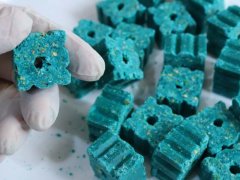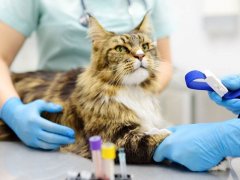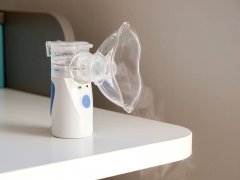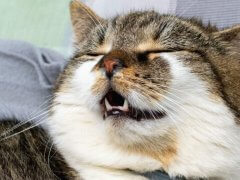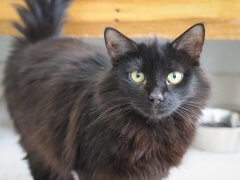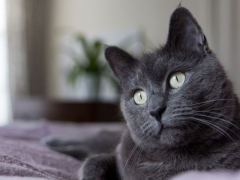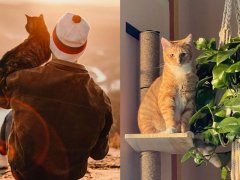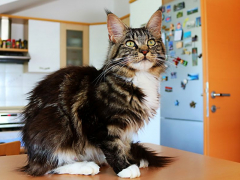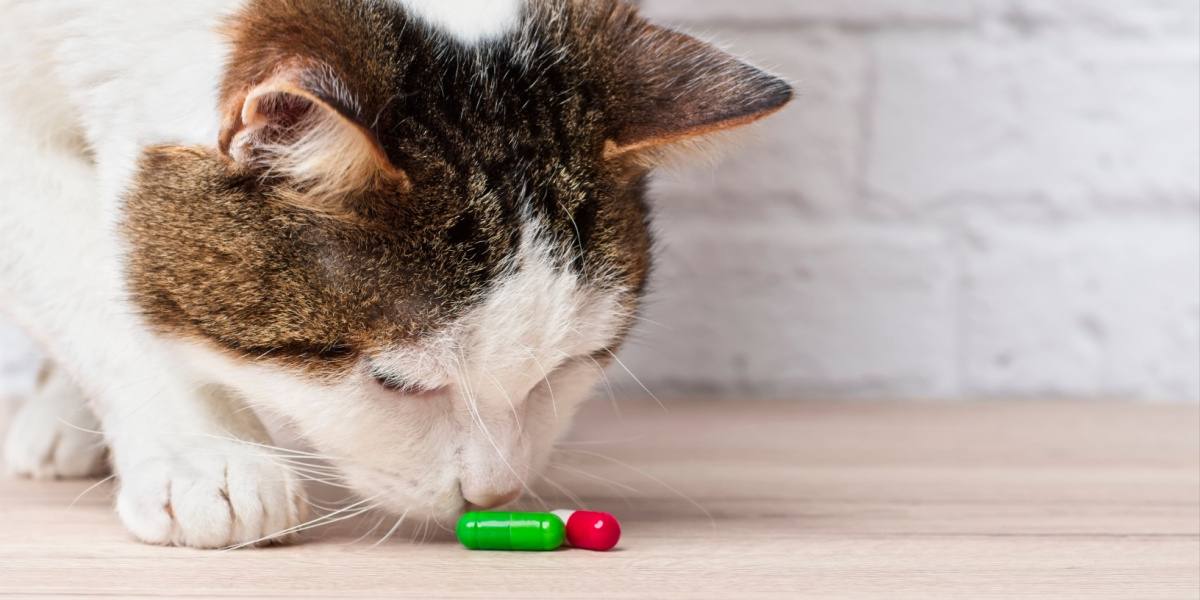
Lightspruch / Shutterstock.com
Vitamin E is an essential nutrient for your cat, meaning they need it in their diet to stay healthy. It is a proven antioxidant and plays a role in nearly every part of your cat’s immune system – as well as other parts of their body such as their heart and brain.
Your cat should get enough vitamin E in their normal diet if it is complete and nutritionally balanced. However, there is some evidence that giving your cat a vitamin E supplement could enhance their health.
This article will explain what vitamin E does for your cat, and why giving a supplement might be useful. It will also cover what happens if your cat doesn’t get enough vitamin E (deficiency) or too much (toxicity).
About Vitamin E for Cats
Vitamin E is a fat-soluble vitamin that can be stored in the liver. It is found naturally in high-fat foods such as oils, as well as nuts, seeds, and wheat germ. However, vitamin E is always supplemented in pet food to ensure it contains the levels of vitamin E your cat needs. The most common form of vitamin E in pet food is Alpha-tocopherol acetate. This is a very potent form of vitamin E so is often added to replace the vitamin E lost in cooking and storage.
Functions of Vitamin E for Cats
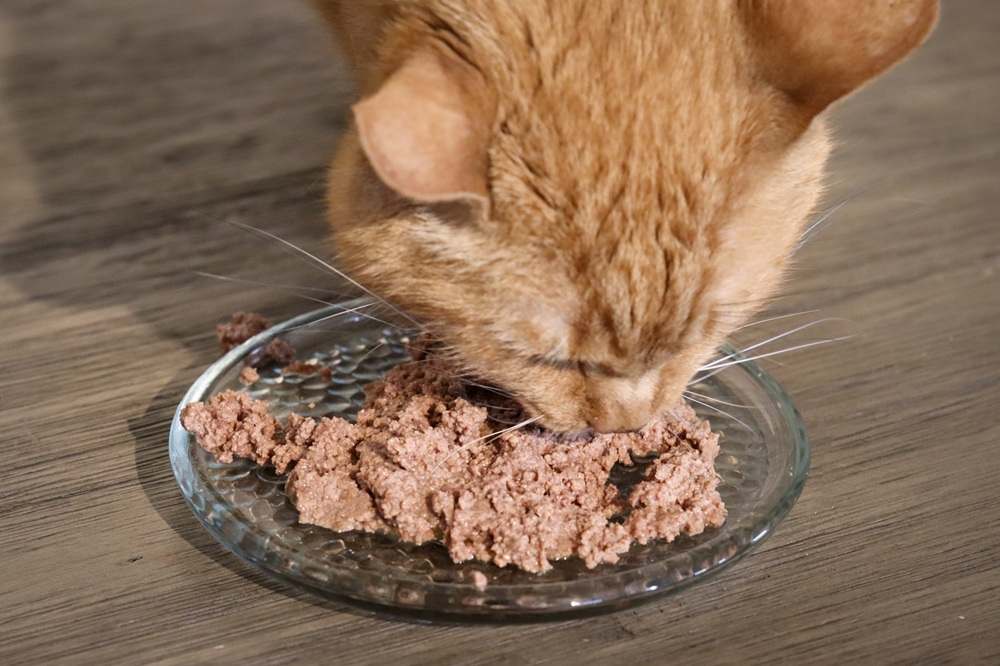
Ensuring your cat gets the right amount of vitamin E in their diet is essential for keeping them happy and healthy. Kirsten McCarthy / Cats.com
Vitamin E plays many important roles in the body. It supports the health of your cat’s eyes, brain, heart, and blood – to name a few! But its main role is in your cat’s immune system. The authors of the book Interactions Between Nutrition and Immunity stated that “almost every aspect of the immune system has been shown to be altered by the dietary levels of vitamin E” including resistance to infection and antibody response.
Above all, vitamin E is proven to be a powerful ‘antioxidant’ – a nutrient that protects cells from damage. Antioxidants neutralize a substance called free radicals. While free radicals are produced naturally in the body, too many can be harmful. They cause oxidative stress which damages cell membranes, proteins, lipids, and DNA and can cause cell death.
Free radicals are linked to many diseases that affect cats, including heart disease, diabetes, arthritis, and cancer. Antioxidants like vitamin E reduce free radicals, helping your cat to stay healthy.
How Much Vitamin E Does My Cat Need?
The recommended daily vitamin E intake for cats set by the Association of American Feed Control Officials (AAFCO) is 40 IU per kilogram of dry matter. This is per kg of food, not kg of body weight.
All balanced and nutritionally complete commercial diets will contain the right amount of vitamin E for your cat – and since the introduction of regulated commercial diets, nutritional diseases have become rare. You can check if your cat’s diet contains all the nutrients they need by looking for the AAFCO statement on the label.
Whatever you choose to feed your cat, it is vital to ensure it contains everything they need, in the right amounts. You can find the recommended nutrient requirements for cats in the AAFCO Guidelines.
Vitamin E Supplements for Cats
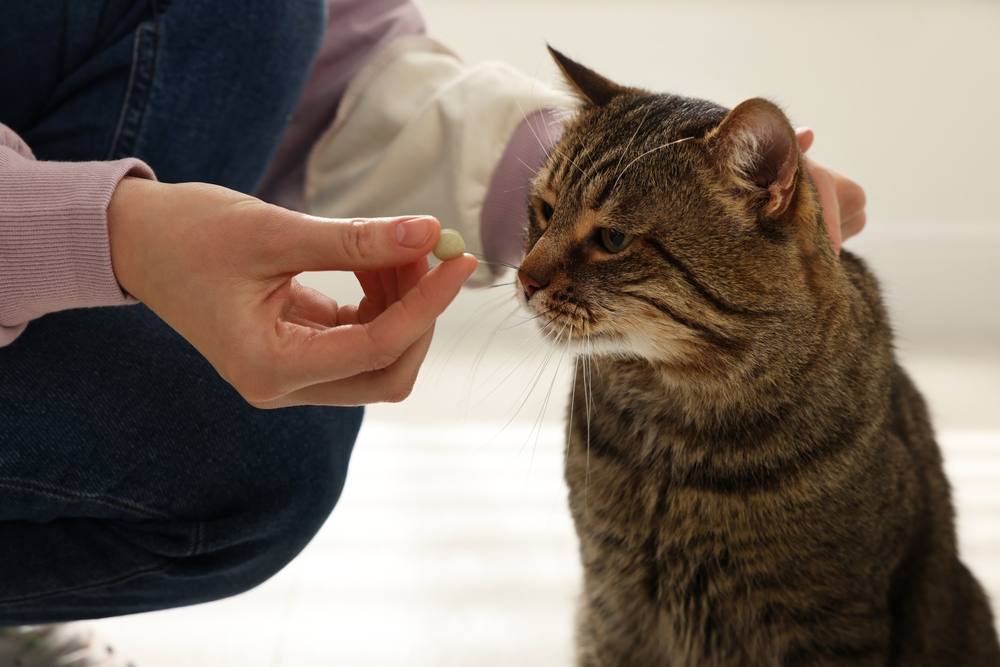
The jury is out on whether giving your cat a vitamin E supplement could enhance their health, with some studies finding positive impacts and others finding no benefit at all. New Africa / Shutterstock.com
You’ve read about the benefits of vitamin E, so you might be wondering if it is helpful to give your cat a vitamin E supplement.
Cats who eat a balanced and complete diet do not need a vitamin E supplement to stay healthy. They will receive all the vitamins and minerals they need in their food. Vitamin E supplements are usually only prescribed for cats suffering from vitamin E deficiency – read on for more about this.
However, there is some evidence that supplementing vitamin E above the minimum requirements could improve immune function in healthy cats. A 2024 study looking at the Effect of dietary antioxidants on free radical damage in dogs and cats found that “cats fed an antioxidant blend inclusive of vitamin E, vitamin C, and beta-carotene have improved immune health as observed through reduced signs of oxidation and decreased cellular breakdown”.
But another study on vitamin E supplementation in cats with chronic kidney disease found that vitamin E supplementation above the recommended amount did not improve immune function or anemia.
So, the jury is out on whether giving your cat a vitamin E supplement will have any benefit. Importantly, you must talk to your veterinarian before adding a supplement to your cat’s diet. Too much vitamin E can result in vitamin E toxicity, which is dangerous.
Vitamin E Deficiency in Cats
Since the introduction of commercially available complete and balanced diets, vitamin deficiencies are rarely seen. But, with the rise of home-cooked, raw, and boutique pet foods, some nutritional disorders – such as low vitamin E – have resurfaced.
This is particularly the case with inappropriate diets that contain high levels of fat or with a high fish content. Signs of vitamin E deficiency in cats tend to come on gradually and include:
- Fatigue
- Muscle weakness
- Poor appetite
- Heart problems
- Liver disease
- Yellow Fat Disease
Cats are also prone to a disease called yellow fat disease, or steatitis. It causes painful inflammation of their fat cells and is usually seen in cats with diets high in polyunsaturated fatty acids (PUFAs) and low in vitamin E. Most cases have been seen in cats eating diets mostly made up of fish or fish products. Obese and young cats are particularly at risk. Symptoms of yellow fat disease include:
- Reluctance to move
- Pain being touched
- Fever
- Poor appetite
- Lethargy
- Dry coat and skin
- Inflamed, lumpy fat under the skin
Treating Vitamin E Deficiency
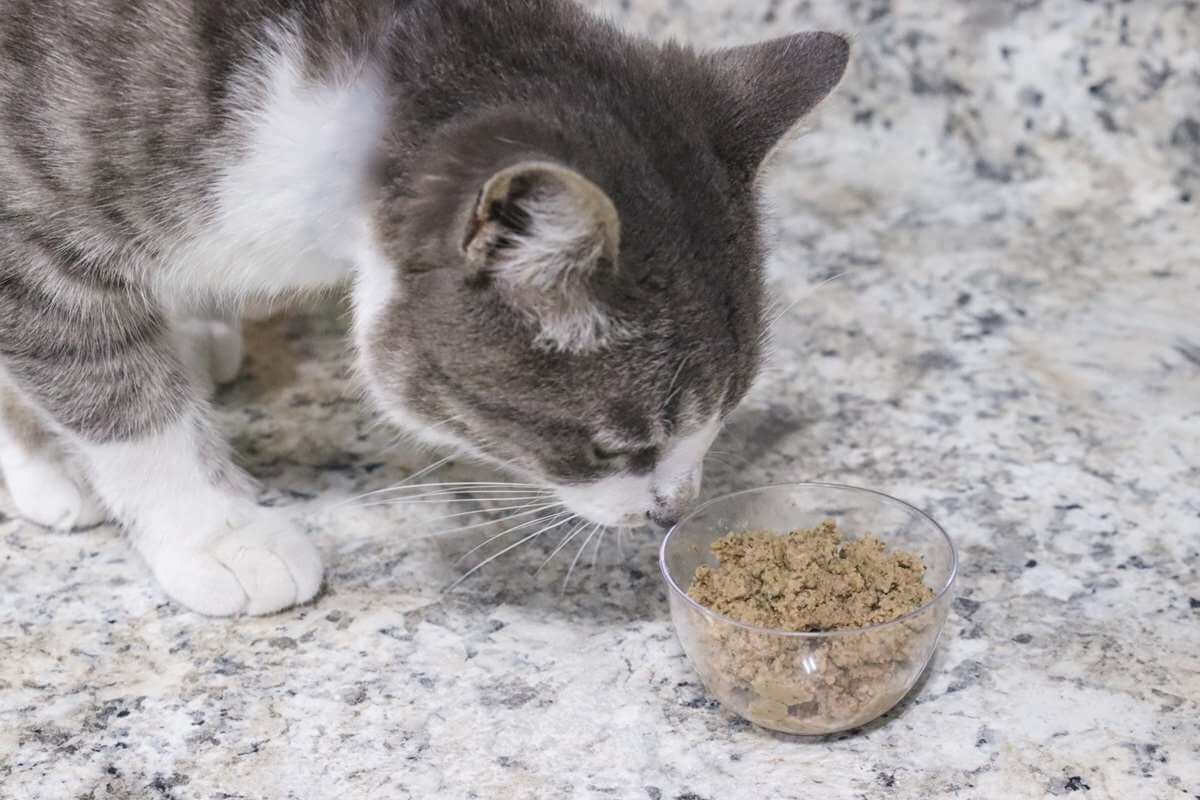
Vitamin E deficiency is treated by swapping your cat onto a complete, balanced diet that contains the right amount of vitamin E. Kirsten McCarthy / Cats.com
While there is a blood test that can confirm vitamin E deficiency, it is not routinely available in most veterinary laboratories. Instead, your veterinarian is likely to suspect the diagnosis based on your cat’s symptoms and a discussion of their diet. In the case of yellow fat disease, a biopsy of the fat nodules can also be diagnostic.
Vitamin E deficiencies (including yellow fat disease) are treated by correcting your cat’s diet. Your veterinarian will move your cat onto a complete, balanced diet that contains the required levels of vitamin E – and remove any source of high fat or fish. A vitamin E supplement may also be considered.
Cats with yellow fat disease should also receive pain relief, with handling kept to a minimum until they are more comfortable.
Vitamin E Toxicity in Cats
Vitamin E is not toxic to cats, and they can safely tolerate amounts much higher than the recommended minimum. However, the safe upper limit has not been established in cats, meaning we do not know how much is too much. Vitamin E overdose happens due to excessive supplementation, not due to your cat’s diet alone.
Vitamin E supplements often contain very high amounts (in the region of 1000IU) so there is a risk of vitamin E toxicity when using vitamin E supplements. Therefore, you should always consult your veterinarian before starting them.
Vitamin E toxicity can cause an increased risk of bleeding, as it interferes with the function of vitamin K in the body. It is treated by managing the symptoms and stopping the use of supplements.
-
AAFCO. (n.d.). AAFCO METHODS FOR SUBSTANTIATING NUTRITIONAL ADEQUACY OF DOG AND CAT FOODS.
-
Harari, J. (2020, November 10). Yellow fat disease in cats and other animals. MSD Veterinary Manual.
-
Jewell, D. E., Motsinger, L. A., & Paetau-Robinson, I. (2024). Effect of dietary antioxidants on free radical damage in dogs and cats. Journal of Animal Science, 102. https://doi.org/10.1093/jas/skae153
-
Klasing, K. C., & Leshchinsky, T. V. (2000). Interactions between nutrition and immunity. In Humana Press eBooks (pp. 363–373). https://doi.org/10.1007/978-1-59259-709-3_30
-
Timmons, R. M., & Webb, C. B. (2016). Vitamin E supplementation fails to impact measures of oxidative stress or the anaemia of feline chronic kidney disease: a randomised, double‐blinded placebo control study. Veterinary Medicine and Science, 2(2), 117–124. https://doi.org/10.1002/vms3.21
